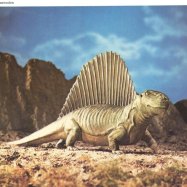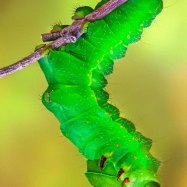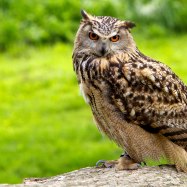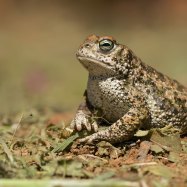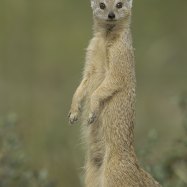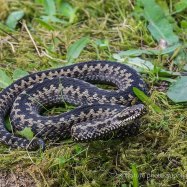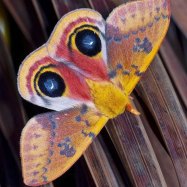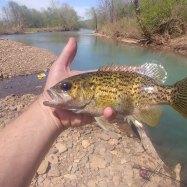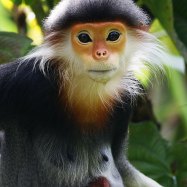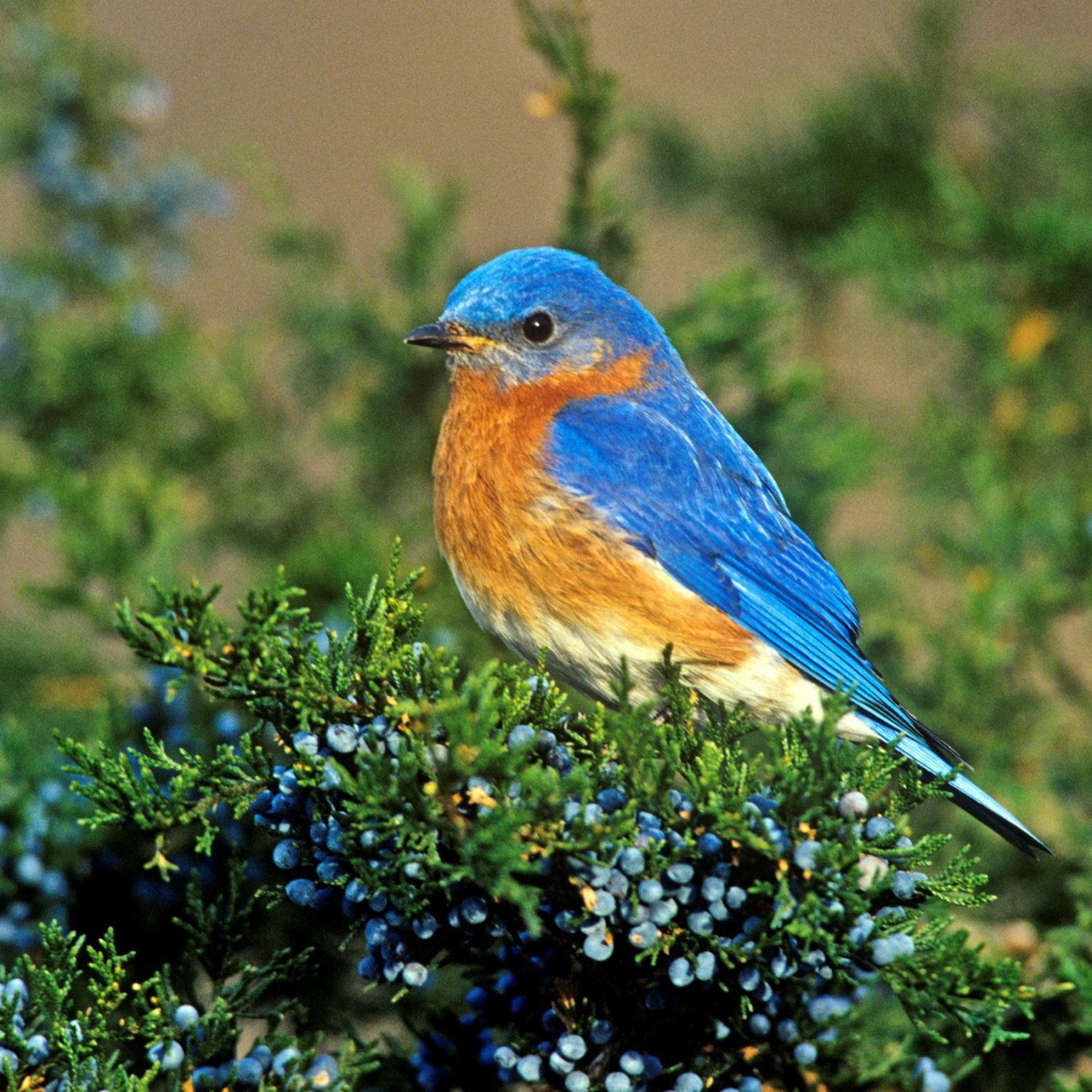
Eastern Bluebird
6.3-8.3 inches (16-21 cm)
The Eastern Bluebird, found in the eastern and central US, is a small to medium-sized songbird known for its vibrant blue feathers and beautiful song. They are categorized under the letter E and can grow up to 6.3-8.3 inches. With their scientific name Sialia sialis and belonging to the family Turdidae, these birds are a delight to watch and listen to in their natural habitats. #EasternBluebird #Turdidae #BirdWatching
Animal Details Summary:
Common Name: Eastern Bluebird
Kingdom: Animalia
Habitat: Open woodlands, orchards, fields, and parks
The Magical Eastern Bluebird: The Soul of Eastern North America
The Eastern Bluebird, scientifically known as Sialia sialis, is a small to medium-sized songbird that can be found across eastern and central United States. Known for its striking blue coloration, this bird has captivated the hearts of bird enthusiasts and non-bird lovers alike.As a member of the kingdom Animalia, phylum Chordata, and class Aves, the Eastern Bluebird is part of the diverse and fascinating world of birds. It belongs to the order Passeriformes and the family Turdidae, meaning it is related to other birds such as robins, thrushes, and bluebirds Eastern Bluebird.
Despite its petite size, the Eastern Bluebird has made a significant impact in the natural world, playing a crucial role in maintaining the balance of ecosystems where it resides. In this article, we will take a closer look at this beautiful creature, its habitat, feeding habits, and geographical distribution.
Habitat and Geographic Distribution
The Eastern Bluebird is native to North America, particularly in the eastern part of the continent. Its geographical distribution spans across the eastern United States, from southern Canada to the Gulf of Mexico and from the Atlantic coast to the Great Plains.This bird is primarily found in habitats with open woodlands, orchards, fields, and parks. It is commonly seen perched on fence posts, utility wires, or branches of trees, keeping a close watch on its surroundings.
In the past, the Eastern Bluebird faced a decline in population due to loss of habitat and competition for nesting sites with other bird species. However, conservation efforts over the years have helped increase their numbers, making it a popular sight for birdwatchers.
Body Shape and Coloration
The Eastern Bluebird is a small to medium-sized songbird, measuring around 6 Eastern Kingbird.3-8.3 inches (16-21 cm) in length. It is known for its striking blue coloration on its head, back, and wings, which gives it an ethereal and almost magical appearance.The male Eastern Bluebird has a bright blue color on its head, back, and wings, while the female has a more subdued blue. Both males and females have a rusty orange breast and a white belly, with the male having a deeper shade of orange.
The vibrant coloration of this bird has led many to believe that it is the soul and spirit of the eastern part of North America, representing the beauty and magic of nature.
Feeding Habits
The Eastern Bluebird is an insectivorous and frugivorous bird, meaning it primarily feeds on insects and fruits. Its diet consists of a variety of insects, including grasshoppers, beetles, caterpillars, and spiders. It also enjoys feasting on fruits, such as blueberries, raspberries, and grapes.These birds are known to be beneficial to farmers as they help control insect populations, reducing the need for harmful pesticides. They also play a role in dispersing seeds of various fruits they consume, contributing to plant diversity in their habitat.
In the colder months when insects are scarce, Eastern Bluebirds rely more on fruits, making them a valuable ally for orchard owners and fruit farmers.
Social Behavior
The Eastern Bluebird is a social bird, often seen in pairs or small groups. They are known to be monogamous, meaning they mate for life, and the male and female often stay together even outside the breeding season.During the breeding season, you can spot them perching on the same branch, grooming each other, and hunting for food together. These birds also have a distinct call, which they use to communicate with their mates and other members of their group.
Nesting and Reproduction
The Eastern Bluebird is a cavity nester, meaning it builds its nest inside a cavity or hole in a tree. However, due to competition for nesting sites, they have adapted to use man-made nest boxes, making it easier for conservationists to monitor and protect their nesting success.The male Eastern Bluebird is responsible for finding and defending a nesting site, while the female builds the nest using grass, leaves, and twigs. The female typically lays 3-7 eggs, which are incubated by both parents for about 12-14 days.
Once the eggs hatch, the parents work together to feed and raise their young. After about 17-21 days, the young bluebirds will fledge and begin to explore their new surroundings.
Threats and Conservation
The Eastern Bluebird population has faced challenges in the past, with the loss of habitat and competition for nesting sites being the primary threats. However, conservation efforts by organizations and individuals have helped increase their numbers.One way to support the conservation of Eastern Bluebirds is by providing them with suitable nesting sites. This can be done by setting up man-made nest boxes, which can be easily purchased or built using specific specifications recommended by conservation experts.
Another way to support these beautiful birds is by avoiding the use of harmful pesticides in gardens and maintaining natural habitats where they can thrive. By taking small actions, we can all contribute to the well-being and survival of these stunning creatures.
The Eastern Bluebird in Folklore and Mythology
The beauty and magic of the Eastern Bluebird have captured the hearts and imagination of people for centuries. In many Native American cultures, this bird is seen as a symbol of hope, happiness, and prosperity.In Cherokee mythology, the Eastern Bluebird is associated with the creation of the earth and is said to have been present when the physical world was created. In Creek legend, the bluebird is considered the "Lord of the Hills" and is credited for bringing spring to the land.
In modern times, the Eastern Bluebird is often depicted as a symbol of love, loyalty, and hope. Its vibrant blue color and cheerful song make it an iconic and beloved bird in popular culture.
In Conclusion
The Eastern Bluebird is a fascinating and important creature in the natural world. Its vibrant coloration, social behavior, and crucial role in maintaining ecosystems make it a symbol of the beauty and magic of nature.By understanding and appreciating these birds, we can all contribute to their conservation and ensure that future generations can also witness the wonder of the Eastern Bluebird in the wild. So, the next time you spot one perched on a fence post or flying through the sky, take a moment to appreciate the incredible and magical world of the Eastern Bluebird.

Eastern Bluebird
Animal Details Eastern Bluebird - Scientific Name: Sialia sialis
- Category: Animals E
- Scientific Name: Sialia sialis
- Common Name: Eastern Bluebird
- Kingdom: Animalia
- Phylum: Chordata
- Class: Aves
- Order: Passeriformes
- Family: Turdidae
- Habitat: Open woodlands, orchards, fields, and parks
- Feeding Method: Insectivorous and frugivorous
- Geographical Distribution: Eastern North America
- Country of Origin: United States
- Location: Eastern and central United States
- Animal Coloration: Bright blue head, back, and wings; rusty orange breast; white belly
- Body Shape: Small to medium-sized songbird
- Length: 6.3-8.3 inches (16-21 cm)

Eastern Bluebird
- Adult Size: Small
- Average Lifespan: 6-10 years
- Reproduction: Monogamous
- Reproductive Behavior: Nest in tree cavities or nest boxes
- Sound or Call: Soft melodious warbling
- Migration Pattern: Partially migratory
- Social Groups: Pairs or small family groups
- Behavior: Active foragers, often seen perched on branches or hunting for insects on the ground
- Threats: Habitat loss, nest competition with invasive species, and severe weather
- Conservation Status: Least Concern
- Impact on Ecosystem: Control of insect populations
- Human Use: Birdwatching, nest box programs
- Distinctive Features: Bright blue coloration and rusty-orange breast
- Interesting Facts: Eastern bluebirds are the state birds of both New York and Missouri
- Predator: Birds of prey, snakes, and cats
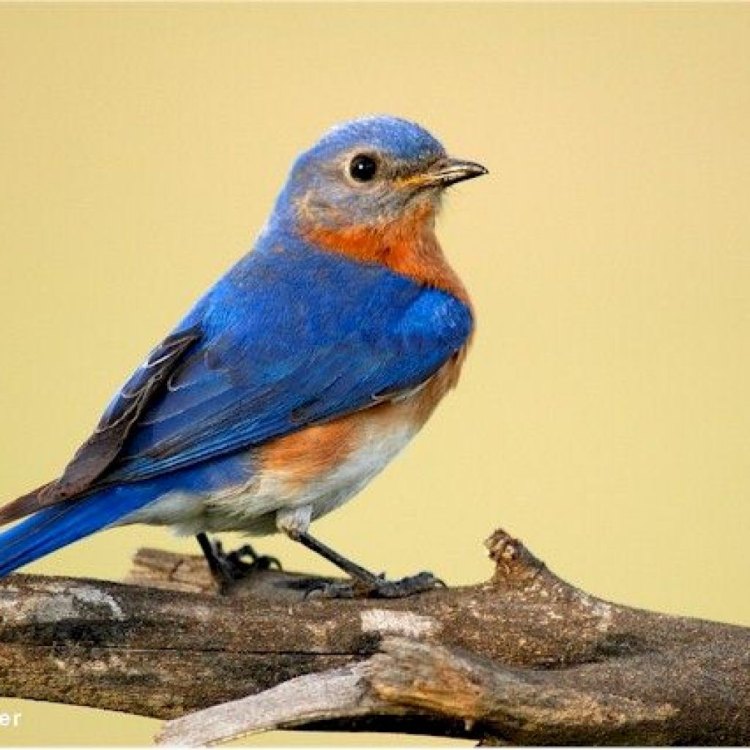
Sialia sialis
The Eastern Bluebird: A Small But Mighty Bird
When thinking of majestic and iconic birds, the Eastern Bluebird may not be the first species that comes to mind. However, this small bird holds many unique and impressive qualities that make it a fascinating subject for study and observation. From its melodious call to its distinctive blue and orange coloring, the Eastern Bluebird is a beloved bird with a significant impact on its ecosystem and human society. In this article, we will delve into the world of this beautiful and intriguing bird PeaceOfAnimals.Com.Size and Lifespan
The Eastern Bluebird (Sialia sialis), also known as the American Bluebird, is a small bird, measuring between 6-8 inches in length with a wingspan of 10-12 inches. It weighs between 1 and 1.2 ounces, making it one of the smallest birds in North America. Despite its small size, the Eastern Bluebird has a lifespan of 6-10 years in the wild, which can extend up to 15 years in captivity. This longevity is possible due to the bird's monogamous reproductive behavior, which leads to the formation of stable and long-lasting pairs.Reproduction and Behavior
Speaking of reproduction, Eastern Bluebirds are known for their monogamous behavior. Once a pair has formed, they will stay together for multiple breeding seasons, often until one of the birds dies. They are also territorial and will defend their nesting site from other birds.Eastern Bluebirds are cavity nesters, meaning they nest in tree cavities or man-made nest boxes Elephant. They prefer open spaces with scattered trees and can be found in various habitats, including fields, meadows, and woodlands. In recent years, the loss of natural cavities has led to the decline of bluebird populations. To combat this, many organizations and individuals have implemented nest box programs, providing a home for the birds to reproduce and thrive.
Sound and Migration
One of the distinguishing features of Eastern Bluebirds is their soft, melodious warbling call. They are known to sing all year round, although their songs are more frequent and complex during the breeding season. Their sweet tunes can often be heard as they sit perched on a tree branch or hunting for insects on the ground.Eastern Bluebirds have partially migratory patterns, meaning some populations will migrate while others stay in their breeding range year-round. Birds in the northern parts of their range, such as Canada, will migrate south in the winter to find food and suitable nesting sites. In contrast, those in the Eastern United States may remain in their breeding range throughout the year, as long as food sources are available.
Social Behavior and Predators
Eastern Bluebirds are highly social birds and can be found in pairs or small family groups. They are active foragers and are often seen hopping on the ground, hunting for insects and other invertebrates. They are also known to perch on branches, scanning their surroundings for potential prey.Just like any other bird species, Eastern Bluebirds have their share of predators. Birds of prey, such as hawks and owls, are one of the biggest threats to adult bluebirds. Small mammals like snakes and cats may also prey on eggs and young birds in the nest.
Threats and Conservation
The Eastern Bluebird faces several threats to its survival, with habitat loss being one of the most significant. The loss of open spaces due to urban development and agriculture has led to a decline in bluebird populations. The introduction of invasive species, such as House Sparrows and European Starlings, has also posed a threat as these birds compete for nesting sites. Additionally, severe weather events, such as heavy rain and strong winds, can impact nesting success.Fortunately, the Eastern Bluebird is not currently considered a threatened species. It has a conservation status of "Least Concern" on the International Union for Conservation of Nature (IUCN) Red List. However, conservation efforts, such as nest box programs and habitat preservation, are crucial in maintaining healthy and stable populations.
Impact on Ecosystem and Human Society
Beyond their beauty and charm, Eastern Bluebirds play an essential role in their ecosystem. As active foragers, they help control insect populations, contributing to the balance of their habitat. Studies have also shown that areas with higher bluebird populations have lower numbers of ticks, which can carry harmful diseases. Therefore, these tiny birds have a significant impact on promoting the health of their environment and potentially human health as well.In human society, Eastern Bluebirds have long been admired and celebrated. They are the state birds of both New York and Missouri, and their images can be found on state flags and emblems. Their bright blue coloration and rusty-orange breast make them a favorite subject for birdwatchers and photographers. Many people also participate in nest box programs, providing safe homes for bluebirds to raise their young and contributing to their conservation efforts.
Interesting Facts
Unsurprisingly, a bird with such unique qualities also has some interesting facts worth noting:- Eastern Bluebirds can produce two to three broods in a single mating season, with each brood consisting of 2-8 eggs.
- Nestlings can leave the nest after just two weeks of hatching, but they still rely on their parents for food for up to four weeks.
- Bluebirds have been known to use animal hair, such as horse or deer hair, in their nest building, possibly to deter predators.
- Eastern Bluebirds are one of the few bird species that can be found in all 48 contiguous states in the United States.
- According to legend, Frosty the Snowman wished to be "as jolly and happy as a bluebird," highlighting the bird's association with joy and happiness.
In Conclusion
From their stunning blue and orange coloring to their distinctive behavior and impact on the ecosystem, Eastern Bluebirds are truly remarkable birds. Despite facing threats and challenges, their presence in our world is a testament to their resilience and adaptability. As we continue to appreciate and protect these birds, we can ensure that future generations will be able to enjoy their beauty and contributions to the world.
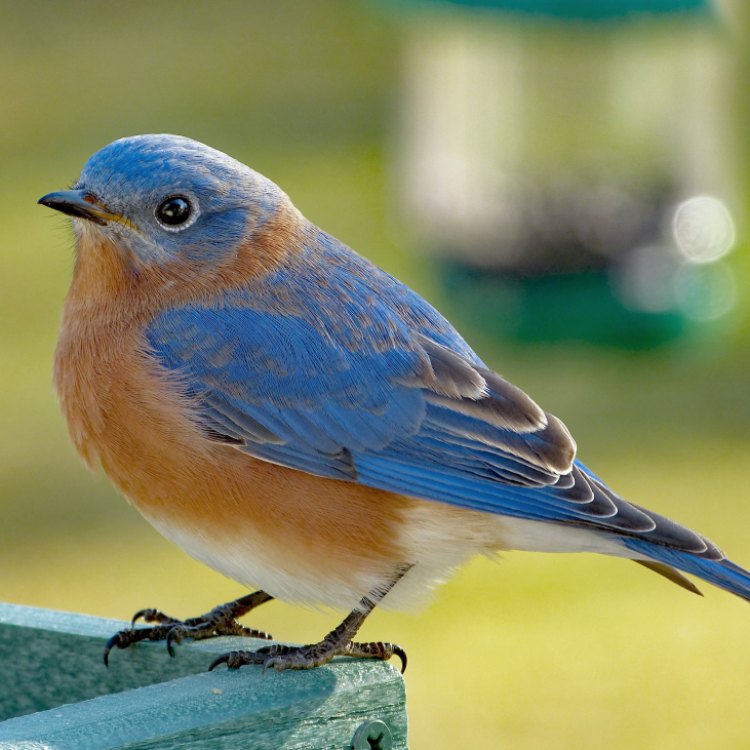
The Magical Eastern Bluebird: The Soul of Eastern North America
Disclaimer: The content provided is for informational purposes only. We cannot guarantee the accuracy of the information on this page 100%. All information provided here may change without prior notice.

